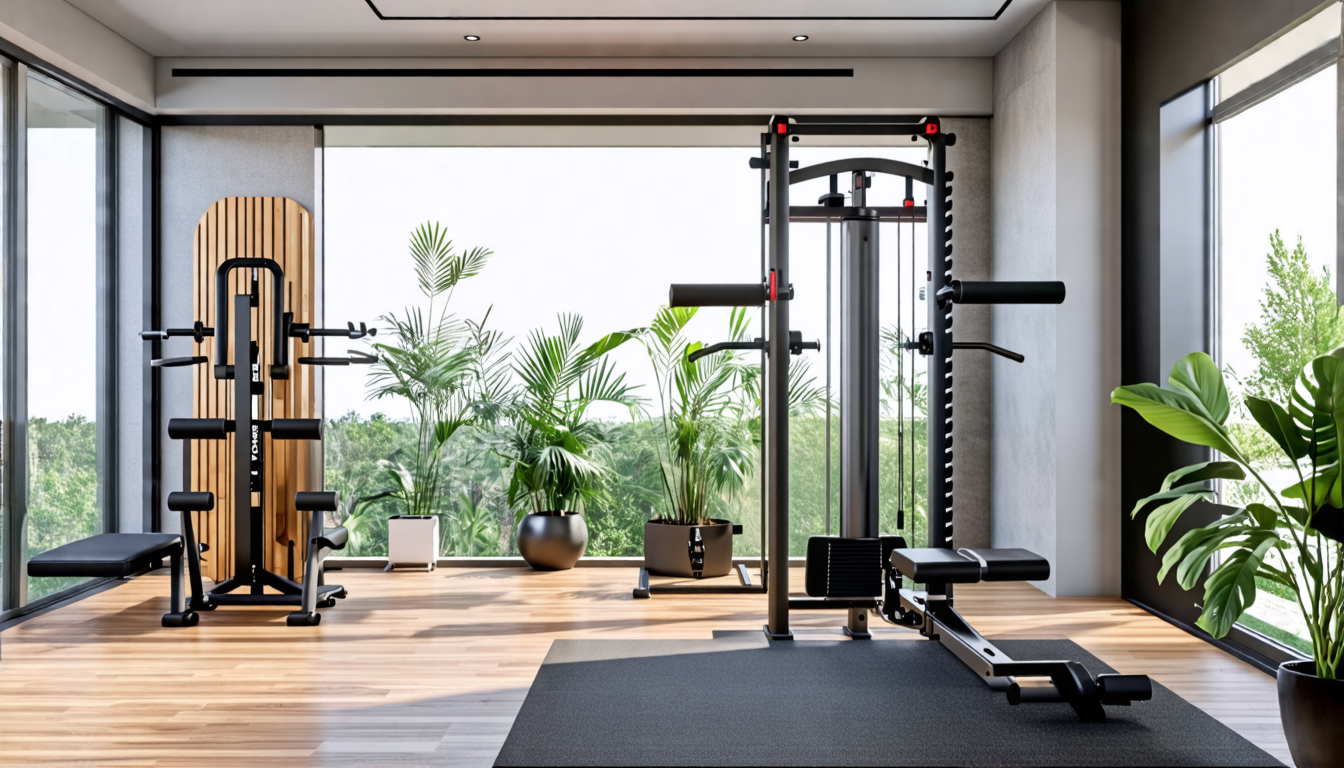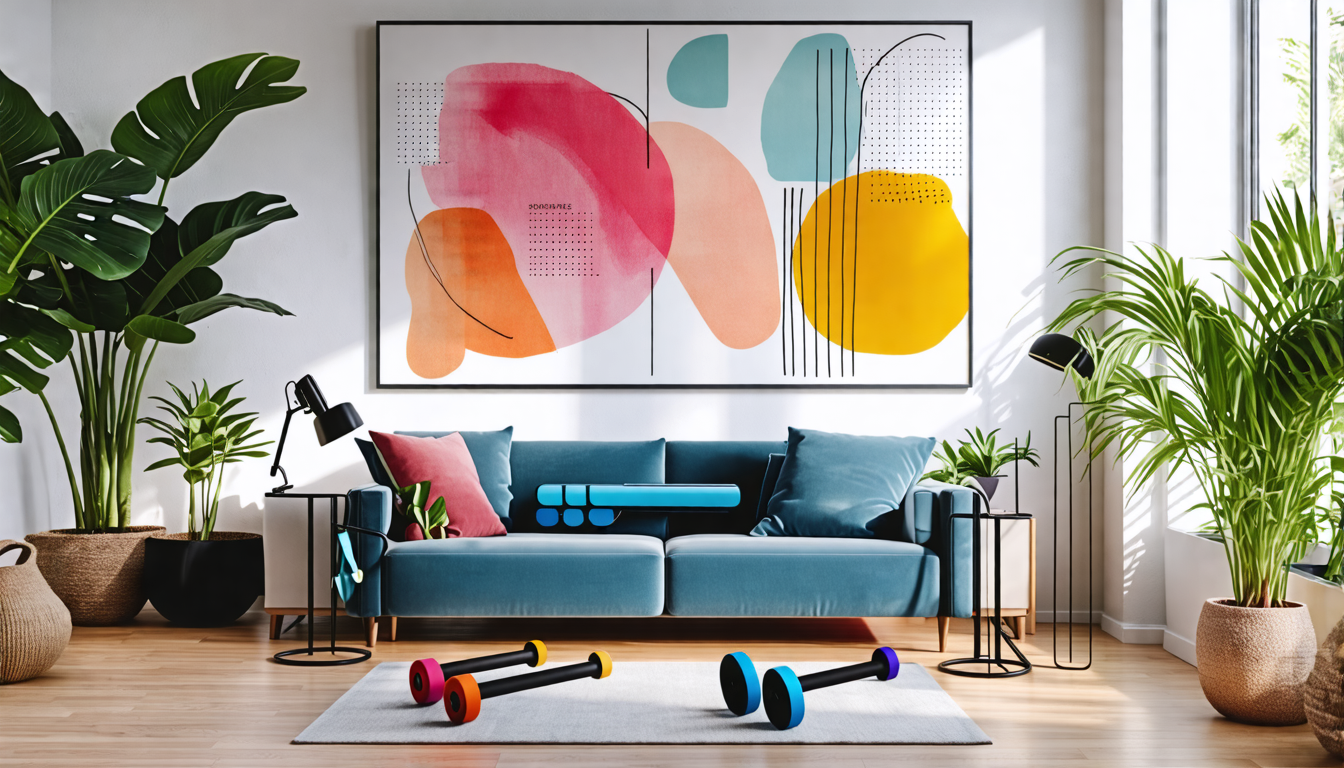A home fitness bar is at the heart of many effective workout routines, and customizing it can be a game-changer for fitness enthusiasts seeking a more personalized exercise experience. Understanding the basics of home fitness bar customization is essential if you want to elevate your home gym setup. Customization allows you to tailor the bar to your specific fitness needs and preferences, thus enhancing your overall workout routine. Whether you’re focusing on strength, flexibility, or endurance, adjusting various components of the bar, such as its length, weight capacity, or material, can significantly affect your training outcomes. Moreover, personal touches like adding grip tape or choosing a unique finish can improve comfort, safety, and the aesthetic appeal of your equipment.
To effectively customize your home fitness bar, a systematic approach is required. A step-by-step guide to personalization includes selecting appropriate attachments like weight plates, collars, and hooks that align with the diverse array of exercises you aim to perform. Consider additional features such as spin collars and ergonomic designs tailored to boost safety and efficiency during your workouts. Customization does not end with the physical alterations; maintaining the fitness bar is also crucial to ensure its longevity and continuous optimal performance. By customizing your fitness bar, you not only create a piece of equipment that is finely attuned to your workout goals but also enhance your overall home fitness experience, setting the stage for achieving greater results in the comfort of your own gym.
Customizing your home fitness bar is not just about making it look appealing; it’s about enhancing its functionality to suit your specific workout needs. Understanding the basics of a home fitness bar customization involves exploring its essential components and identifying ways to modify them to better align with your fitness goals. This can include adjustments to the length, weight capacity, and material of the bar, along with other features like grip tape or finish customization for improved comfort and aesthetics.
Length Adjustments
The length of a home fitness bar can significantly affect your workout routine. Standard Olympic bars are usually about 7 feet long, which can be cumbersome for home use, especially if space is limited. Shorter versions, like the 5 or 6-foot bars, may be more suitable for home gyms. Besides space considerations, the bar length affects the type of lifts you can perform and the form you maintain during those exercises. Customizing your fitness bar length to fit your workout space can ensure greater comfort and effectiveness in your training sessions.
Weight Capacity
Another critical factor for customization is the weight capacity of the bar. Different bars support different maximum weights. A standard bar might not suffice if you’re lifting heavier weights as part of your fitness goals. Opting for a bar with a higher weight capacity allows you to progress in your strength training without the need to replace your bar frequently. Additionally, customizing this component helps you avoid injury risks associated with overloading a bar beyond its capacity.
Material Selection
The material of your fitness bar is also pivotal for customization. Bars are commonly made from steel, but the type of steel can vary. Higher-quality bars often use alloy steel, which is known for its strength and durability, and sometimes coating such as zinc or chrome for rust resistance and appeal. If you’re looking to elevate your bar even further, opting for stainless steel bars or bars with protective coatings not only increases longevity but also the aesthetic value, fitting seamlessly into any home gym environment.
Adding Grip Tape
Grip tape is another customization option that not only enhances the appearance of your home fitness bar but also provides functional benefits. Applying grip tape can help improve your hold on the bar, especially during intense workouts or exercises that involve heavy lifting. Different types of grip tape are available, including those made from rubber or silicone, each offering varying degrees of texture and comfort. By experimenting with different grip tapes, you can find the optimal grip that complements your workout style and minimizes the risk of slippage.
Bar Finish Customization
Lastly, customizing the bar’s finish can contribute to both aesthetics and functionality. Some people prefer a matte finish for its ability to minimize glare, making it easier to focus during workouts. Others might opt for a polished look that matches the sleek design of their home gym. Beyond appearances, different finishes can impact grip and durability. A textured finish, for example, can be more slip-resistant than a smooth finish, while a specific coating can protect the bar from sweat and reduce rust over time. These considerations can make a significant difference in comfort and appearance, thus enhancing the overall experience of using your customized home fitness bar.
By understanding these basic elements of home fitness bar customization, you’ll be better positioned to tailor your equipment to support and elevate your fitness regime. Whether it’s through modifications to length, weight capacity, material, or additional enhancements like grip tape and bar finish, customized fitness bars provide a unique opportunity to optimize your workouts and maintain a motivating fitness environment at home.

Steps to Effectively Customize Your Home Fitness Bar
Customizing your home fitness bar is a vital step toward optimizing your workout experience and achieving your fitness goals. By personalizing your bar, you can tailor it to suit a variety of exercises and enhance overall safety and efficiency. This step-by-step guide will walk you through the key considerations and options available for customizing your home fitness bar.
Selecting the Right Attachments
The first step in customizing your home fitness bar is choosing the appropriate attachments to accommodate different exercises. The two primary components you need to consider are weight plates and collars.
- Weight Plates: Depending on your strength level and goals, select weight plates that can easily attach to your fitness bar. Opt for bumper plates if you perform Olympic lifts or for rubber-coated plates to reduce noise and protect your floors.
- Collars: Secure weight plates with high-quality collars that prevent them from slipping during exercise. Spring collars are standard, but for a more secure fit, consider using lockjaw or clamp-style collars.
Incorporating Hooks and Additional Accessories
To expand the versatility of your home fitness bar, consider incorporating hooks and additional accessories.
- Hooks: These can be attached to your bar to perform exercises such as resistance band training or TRX workouts. Hooks provide the convenience of integrating additional resistance without needing a separate piece of equipment.
- Extra Accessories: Items like barbell pads can add comfort while performing exercises such as squats or lunges. They cushion the bar, reducing strain on your shoulders and neck.
Evaluating Spin and Ergonomic Design Features
An often-overlooked aspect of customizing your home fitness bar is the spin and ergonomic features, which can significantly impact your workout performance and safety.
- Spin Collars: Bars with spin collars feature bearings or bushings that allow the weight sleeves to rotate smoothly. This is essential for exercises like power cleans or snatches, where fluid motion is necessary.
- Ergonomic Design: Consider a bar with an ergonomic design that aligns with your grip and minimizes strain on your wrists. Features like knurled grips can enhance your hold and prevent slipping during heavy lifting.
Considering Aesthetic and Comfort Enhancements
While functionality is paramount, the aesthetic and comfort of your fitness bar play an essential role in your workout enjoyment and motivation.
- Custom Finish: Opt for a bar with a coating that resists rust and corrosion. Finishes such as black zinc, chrome, or cerakote can enhance durability and provide an appealing look.
- Grip Tape: Add grip tape to areas where you frequently hold the bar to improve grip and comfort. This is especially useful in preventing slippage and callouses during sweat-inducing workouts.
Maintaining Your Customized Fitness Bar
After customizing your fitness bar, regular maintenance is crucial to ensure its longevity and performance.
- Cleaning: Wipe down the bar after each use to remove sweat and prevent corrosion. Using a gentle cleaner or a cloth dampened with water can keep your bar in pristine condition.
- Inspecting Collars and Attachments: Periodically check that collars and attachments are functioning correctly and not worn out. Replace any that show signs of wear to maintain safety during workouts.
- Storage: Store your fitness bar in a dry area, either on a specialized rack or wall mount, to prevent rusting and maintain its shape.
By following these steps to customize and maintain your home fitness bar, you can create a tailored fitness experience that matches your individual needs and maximizes your workout efficacy.
Customizing a home fitness bar is an empowering venture that marries functional fitness with personal expression, allowing individuals to tailor their equipment to meet specific workout needs and aesthetic preferences. By understanding the foundational elements of a fitness bar, users can make informed decisions about modifications that enhance both performance and comfort. Adjustments in the bar’s length, weight capacity, and material offer customization avenues that accommodate different strength levels and exercise routines, ensuring the fitness bar grows with your fitness journey.
The process of personalizing your fitness bar involves a series of thoughtful steps designed to optimize its utility and longevity. Selecting the right attachments, such as weight plates and collars, is crucial to adapting the bar for a variety of exercises, from weightlifting to high-intensity training circuits. Incorporating features like spin collars and ergonomic designs can significantly elevate the safety and efficiency of workouts, making sessions more productive and less prone to injury. Additionally, enhancements such as grip tape or personalized finishes not only improve comfort but also inject a sense of personal style into your fitness space, inspiring motivation and consistency.
Moreover, maintaining a customized fitness bar is essential to preserving its functionality and aesthetic appeal. Routine checks on the attachments and finishes will help sustain its condition, allowing for a durable and reliable piece of home fitness equipment. As home fitness bars become an integral part of personal training spaces, such customization not only refines exercise routines but also contributes positively to the overall home fitness environment. This integration of function and aesthetic personalization reflects the growing trend of individualized fitness solutions, ensuring that each element of your home workout setup aligns seamlessly with your personal and fitness goals.

